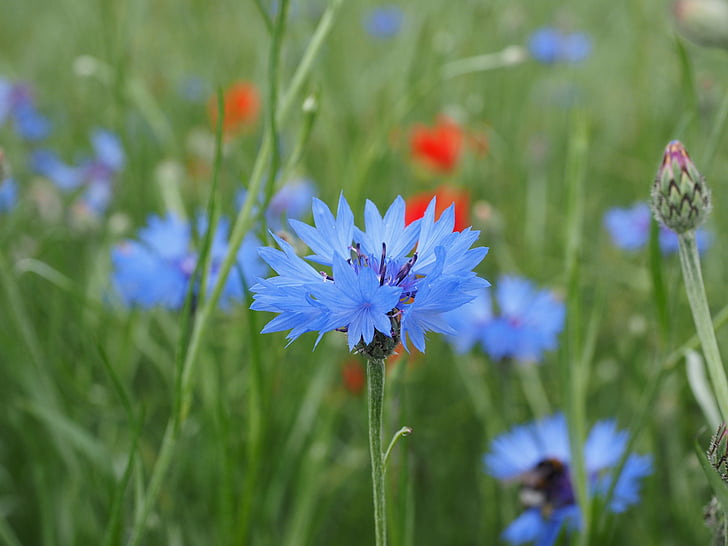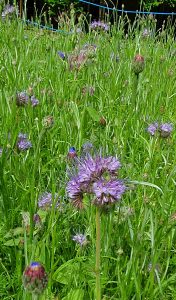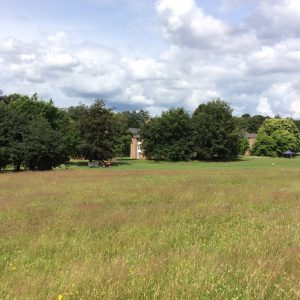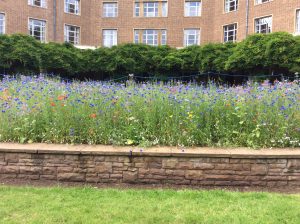
August 17, 2021, by sustainablenottingham
Beyond No Mow May, Biodiversity at the University of Nottingham: Part 2
In a recent blog we explored how biodiversity on our campuses was being enhanced during #NoMowMay. As we passed through #LetItBloomJune and #KneeHighJuly the newly flowered areas have brightened up our campuses and provided food to pollinating insects. The grounds team tell us more.
Jubilee Charnock Field wildflower trial
In May, a trial began at Jubilee campus to establish the best places to plant wildflowers. The trial has gone well with the areas flowering throughout the summer. Feedback from those walking through the campus says it’s made a huge difference.
Prior to planting, we undertook some PH soil testing to help determine what we can use, although you can make slight alterations to suit any requirements. As they say you, can alter the texture, but can’t alter the structure of the soil. Ideally you need a combination of both perennial and annuls. Sowing should take place during March-April or in the autumn around September.
There are two wildflower beds; one with a specific mix targeting bees and butterflies, the other aimed at birds, containing species such as sunflowers.
To prepare the ground we used the nonchemical approach. We merely cut the grass as low as possible, scarified (loosened the surface) and lightly cultivated each area, and finally raked to get the large grass sods out. This means there is less competition from the grass, which would grow more vigorously and slowly swamp out any emerging seeds.

Wildflower bed at Nightingale Hall
This bed outside halls of residence on University Park was seeded in May and has been looking fantastic ever since. It is made up of the following wildflower mixes:
- purple tansy (see right)
- striking blue cornflowers
- viper’s bugloss
- orange California poppy
- candytuft
- violet coloured flax
- pink cosmos and orange pot marigolds
It took only 8 weeks for the first flowers to start to appear and the blooms have continued through the summer.
No Mow continues
The spaces left as part of #NoMowMay have become wildflower meadows. Across the Downs (below left) and around Derby Hall (below right) on University Park, the grass has grown high and is providing a valuable habitat to wildlife.


No comments yet, fill out a comment to be the first


Leave a Reply